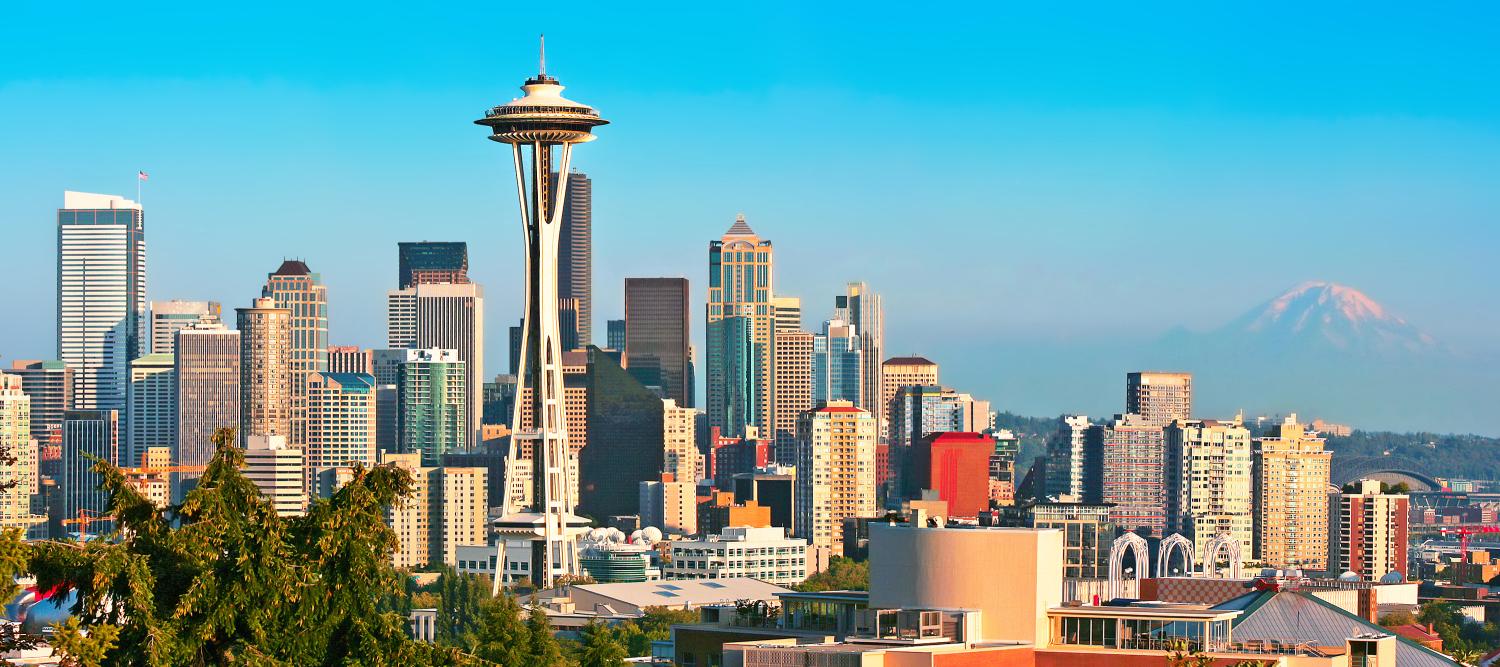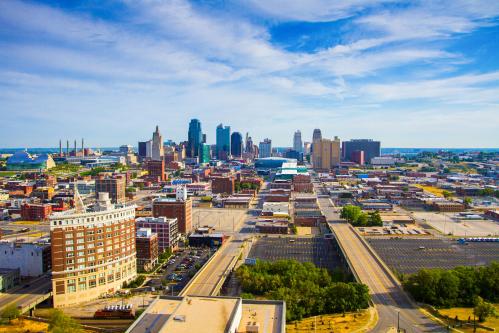In December, Brookings Metro and Robert Atkinson of the Information Technology & Innovation Foundation released a report noting that 90% of the nation’s innovation sector employment growth in the last 15 years was generated in just five major coastal cities: Seattle, Boston, San Francisco, San Diego, and San Jose, Calif.
This finding sparked appropriate consternation, but also some disbelief. Perhaps, some suggested, Big Tech is becoming less concentrated if one considers digital services industries such as computer systems design, which our definition of the “innovation sector” omitted. Those industries could be more footloose and likely to stray from large coastal cities and into the heartland.
Unfortunately, the new analysis we produced for the American Enterprise Institute on the geography of digital services industries doesn’t show this. In fact, it shows the opposite: more divergence between the metropolitan “winners” and also-rans. Tech—as epitomized by the four key digital services industries we studied—is concentrating rather than spreading out.
Sure, dozens of snappy startups are launching in places like Akron, Ohio, Memphis, Tenn., and Louisville, Ky.—enough so that metro areas across America have added tech jobs since 2010. But even so, digital tech by our measure has continued to concentrate in a short list of major cities over the decade, rather than disperse outwards. As such, many metro areas are losing their shares of the overall tech sector even as they grow.
The upshot is sobering: “Winner-take-most” seems more the rule than the hoped-for “rise of the rest.” And that’s a problem we will need to confront more directly than we have until now.
What specifically does the new data show? The story isn’t great. Expanding on our last look at tech location trends from late 2018, this new analysis of job creation in four digital services industries finds that superficial good news masks deeper-set problems.
To be clear, tech remains a compelling contributor to regional growth, and is, in fact, growing in new places. Specifically, digital services continues as a critical part of the national economy, accounting for 80% of the nation’s advanced industries growth from 2010 to 2018, as employment grew 4.2% a year based on compound annual growth rate (CAGR) calculations. Likewise, unexpected heartland metro areas far from the coastal hubs surfaced as fast-growing tech centers in the 2010s. Among the 100 largest U.S. metro areas, for example, Charleston, S.C., Charlotte, N.C., Lakeland-Winter Haven, Fla., Boise, Idaho, and Wichita, Kan. all posted digital services growth of over 7% per year over the decade. Midwestern stalwarts Kansas City, Mo., Madison, Wis., and Indianapolis all saw yearly growth of more than 6%.
In short, it’s absolutely true that tens of thousands of digital services jobs—central to the current artificial intelligence-driven tech boom—are sprouting in up-and-coming heartland towns. And with those jobs comes growth, hope, good pay, and attractive economic multiplier effects.

But that’s just the surface story. Deeper analysis of tech’s shifting structure clearly shows that although more cities are enjoying a mathematical rise in the number of tech jobs, the sector has been rapidly concentrating all decade. This dynamic may reflect the rising importance of giant agglomerations of talent and firms in periods of tech disruption, as with the decade’s waves of social media and artificial intelligence innovation. It might reflect the continued groupthink of tech industry managers and funders about siting decisions. Or, it might reflect the geographic effect of monopolistic “platforms” in Big Tech, which may prevent the entry of geographical as well as corporate rivals.
The numbers are eye-popping. The top five metro areas with the highest shares of the nation’s digital services industry accounted for 28% of all of these jobs nationwide in 2018, while the top 10 encompassed 44.3%. The same top 10 metro areas captured almost half (47.9%) of the nation’s new tech jobs from 2010 to 2018, with five of them—San Francisco, Seattle, San Jose, Los Angeles, and Austin, Texas—increasing their share of the nation’s tech work especially fast. Those five alone captured 28% of all new digital services job growth and increased their share of the nation’s core tech employment by 1.8 percentage points.

To put a finer point on the trend, consider that tech’s most elite “superstar” cities—San Francisco and San Jose—ascended even further in the 2010s. San Francisco added over 10% of the nation’s new digital services jobs (roughly 110,000), while San Jose accounted for nearly 8% of such jobs, or about 83,000. Together, the two hubs have added 200,000 digital services jobs since 2010 and now concentrate some 11% of the nation’s digital services employment, up from 10.1% in 2015 and 7.5% in 2010. The two also captured a whopping 17.7% of the decade’s new tech employment, and today house nearly 350,000 of the nation’s 3.1 million total tech jobs
Meanwhile, only a few cities in the rest of the country have truly “risen” in the last couple of years and expanded their share of the nation’s digital services employment. Just seven of the largest 100 metro areas in the nation increased their share of the sector by more than two-tenths of a percentage point. In the heartland, only Charlotte, N.C., Denver, and Phoenix are among them. Only nine additional metro areas in the largest 100—including inland centers such as Dallas, Indianapolis, Kansas City, Mo., and Provo, Utah—managed to increase their share of the nation’s digital services sector by at least one-tenth of a percentage point.

Otherwise, progress toward a more geographically balanced tech sector was modest to vanishingly slight in the last decade. Just 21 cities saw their sector share increase between 2010 and 2018, albeit via gains of less than one-tenth of a percent. This group was led by Raleigh, N.C. and includes a number of up-and-coming interior Midwestern and Southern cities such as Pittsburgh, Akron, Greenville, S.C., Grand Rapids, Mich., Chattanooga, Tenn., Spokane, Wash., and Salt Lake City. Although many of these cities made steady progress, they are not significantly increasing their share of the national digital services sector or demonstrating compelling competitiveness.
As for the rest of the nation’s 100 larger metro regions, no less than 63 saw their share of the sector decline due to slow or negative growth. Metro areas such as Providence, R.I., Little Rock, Ark., Virginia Beach, Va., and Stockton, Calif. lost 5% or more of their digital services employment between 2010 and 2018.
The verdict of the data is sobering, then: While tech’s superstar cities have captured the lion’s share of job creation in digital services, their immoderate success has not triggered any sort of self-regulating equilibrium process by which the nation’s stark geographic divides might begin to ease. Even as the tech sector continues to raise hopes for broad economic transformation in the nation’s interior, it is continuing to reflect—and drive—a “winner-take-most” result. At a time when the nation badly needs to reconnect left-behind people and places to prosperity, tech’s inherent tendency to facilitate geographic agglomeration is only sharpening the nation’s divides.
So, what is it going to take to moderate this tendency and perhaps to spur tech sector growth in new places? Having tracked these trends through the decade, I think the case for concerted national action is now clear, as Atkinson and I previously argued.
The tech economy is unleashing forces that benefit only select group of elite regions, often to the detriment of everyone else. These dynamics are circular, cumulative, and massively scaled. Therefore, they call for a nation-scaled response.
What might such a response look like? At least one part needs to be a national innovation response, one that fundamentally intervenes to alter the country’s entrenched tech map. This is the intent of our proposal for a major tech innovation “surge” that would counter regional divergence by mounting a national competition to create eight to 10 new innovation-driven “growth centers” across the heartland. The plan would be to focus transformative R&D, workforce inclusion, and “placemaking” investment on a limited number of locations as part of a deliberate effort to catalyze the innovation sector takeoff of those regions and develop new tech centers in new places. The same type of federal, place-based innovation surge that created Silicon Valley less intentionally could be updated to do the same for America’s left-behind regions.
But this is just one idea; others can certainly be imagined. We likely need a strategy for reinvigorating hundreds of solid but stagnant communities that lack a plausible innovation “play” of the sort that the growth centers proposal seeks to catalyze. And we need some kind of response to the crisis of the truly left-behind places: the deeply distressed smaller towns and rural areas that have lost their economic purpose and are now stuck in corrosive traps of nonparticipation and underdevelopment.
What is increasingly clear, though, is that tech-based growth will likely not diffuse out into America’s up-and-coming midsized cities and small towns on its own. Instead, it’s going to take tougher action from a concerned nation to counter this excessive concentration and spark new vitality across the heartland.






